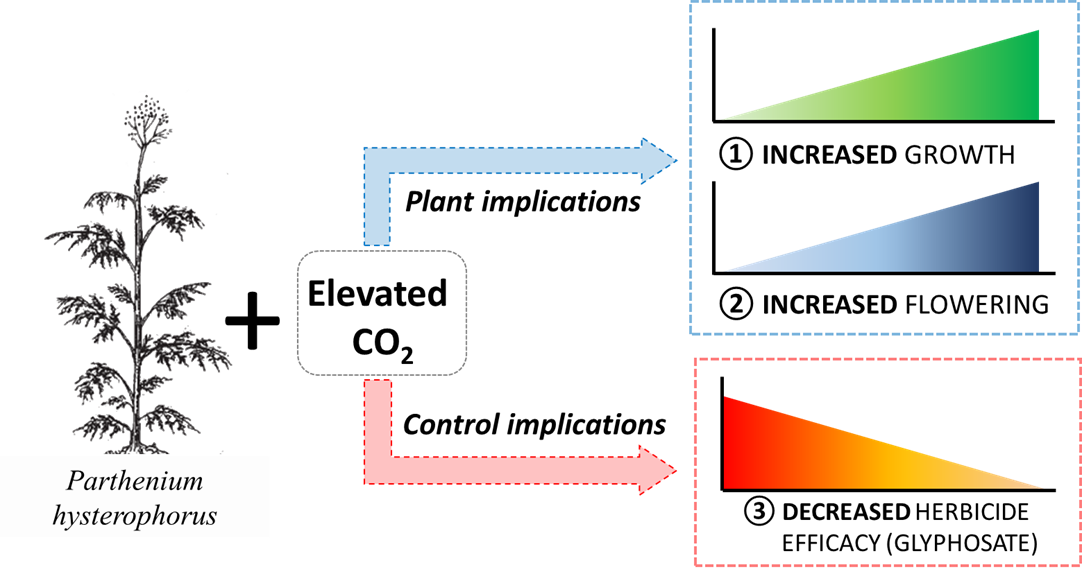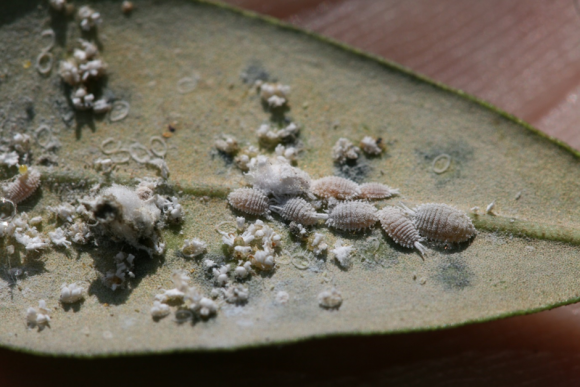A paper published in the journal Pest Management Science showed that herbicide is likely to become less effective in controlling the invasive famine weed (Parthenium hysterophorus) in the future as CO2 levels rise.
The research, conducted by C·I·B PhD student Blair Cowie, under the supervision of C·I·B Core Team member Prof Marcus Byrne at the University of the Witwatersrand, assessed the efficacy of glyphosate (herbicide) in controlling famine weed under the current atmospheric CO2 level (400 ppm) as well as those anticipated in the near future (600 and 800 ppm).
Increases in atmospheric CO2 have been shown to enhance the growth and reproduction of various weeds, helping to increase their invasiveness. However, the indirect effects of rising CO2 levels may be just as concerning, particularly regarding chemical controls. Increases in plant growth, as a result of elevated CO2, are suggested to dilute the effective dosage and limit the uptake and movement of glyphosate within the plant, making the herbicide less effective. Therefore, the use of glyphosate, which remains a common practice to manage famine weed in South Africa and globally, may be less successful in the future as CO2 levels rise.
To assess this, famine weed plants were grown for five consecutive generations under three CO2 levels of 400, 600 and 800 ppm. The results from this study showed that under our current CO2 level (400 ppm), glyphosate remained effective, offering 100% mortality. However, the efficacy of glyphosate declined when applied to famine weed plants grown under elevated CO2 levels (600 and 800 ppm). These plants suffered lower levels of damage from the herbicide, with some able to fully recover and produce viable seed, albeit at relatively low rates of 17 and 25%, respectively. The survival of plants, even at these low rates, is problematic as it is likely to lead to the development of less susceptible and potentially glyphosate resistant populations of famine weed in the field.
“Although this research highlights that glyphosate herbicides should remain a useful management tool, if applied correctly, under our current CO2 levels (~400 ppm), it also warns that South Africa should not become complacent with nor reliant upon these herbicides as long-term control for Parthenium” says Blair Cowie, lead author of the paper. He added that “ultimately, this promotes the need to better implement and enhance other, more promising controls, namely biological control and integrated management”.
Read the paper in Pest Management Science
Cowie, B.W., Venter, N., Witkowski, E.T. and Byrne, M.J. 2020. Implications of elevated carbon dioxide on the susceptibility of the globally invasive weed, Parthenium hysterophorus, to glyphosate herbicide. Pest Management Science. https://doi.org/10.1002/ps.5767
For more information, contact Blair Cowie at blair.cowie.bc@gmail.com



